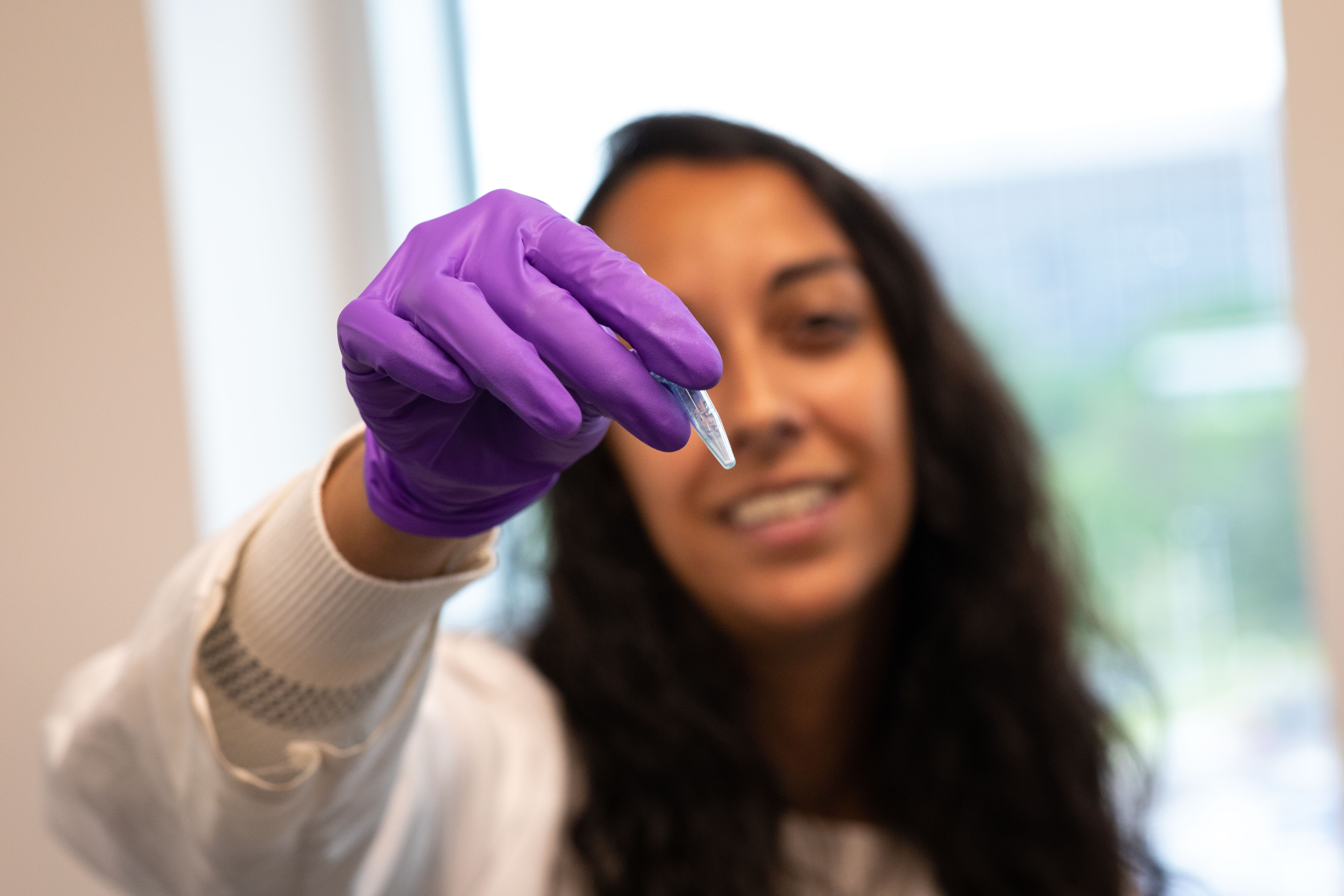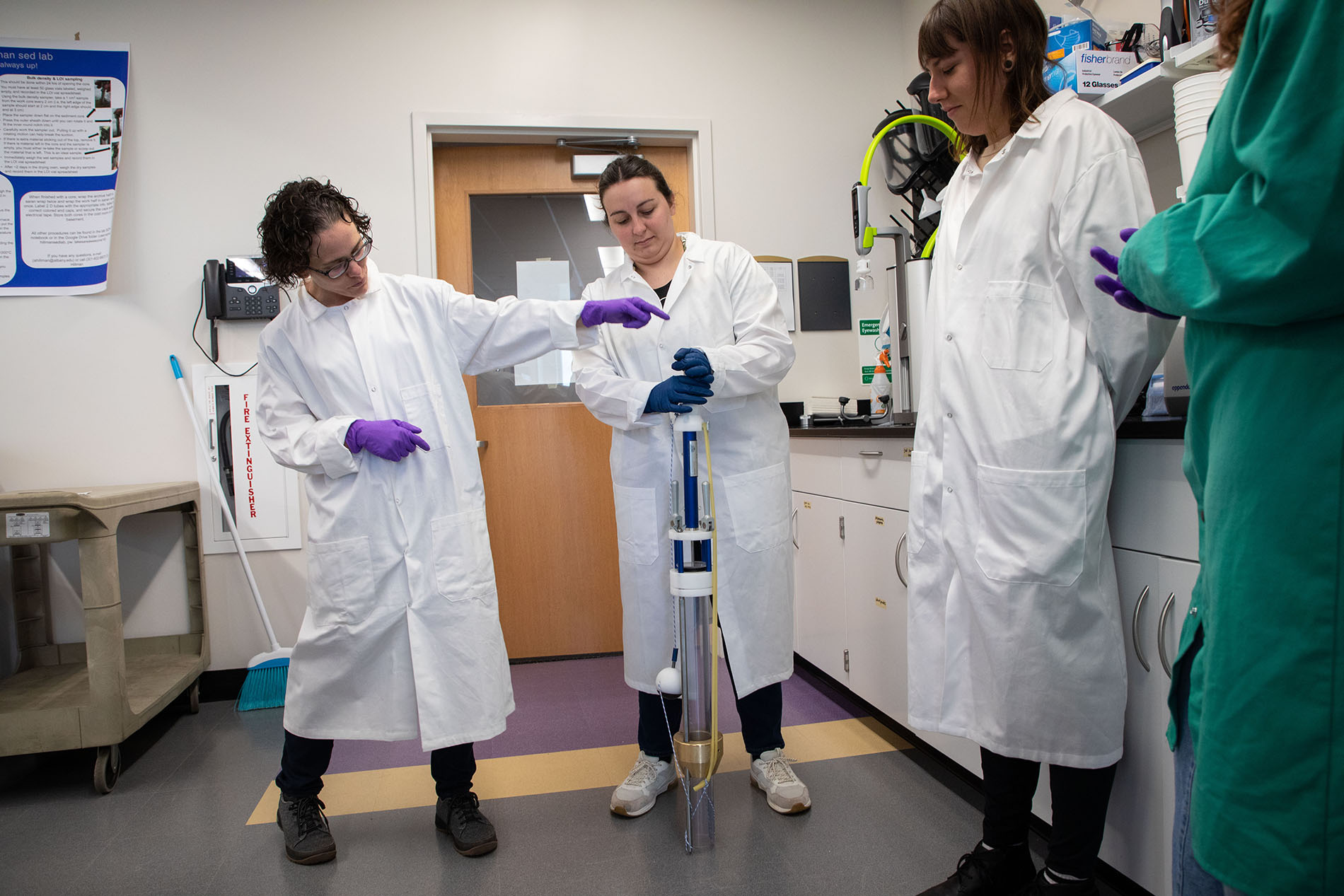New Paleoclimate Lab Studies Earth’s Climate Past
By Mike Nolan
ALBANY, N.Y. (July 28, 2022) — University at Albany scientists have a new way to uncover clues about the Earth’s past climate conditions — from inside the third floor of the ETEC research and development complex.
ETEC’s Paleoclimate Lab officially opened its doors this summer, focused on analyzing samples of natural resources, such as coral and lake sediment, to help reconstruct Earth’s climate history and determine how it relates to present or future climate trends.
The lab research is led by Sujata Murty and Aubrey Hillman, assistant professors in the Department of Atmospheric and Environmental Sciences (DAES), along with about a dozen undergraduate and graduate student assistants.
By using in-house equipment, data collection can be completed within a week or two, instead of the average six-to-12-month turnaround when relying on an outside lab, according to Murty.
“This is huge for me,” said Murty, who studies past changes in ocean and climate systems. “We can now do all our sampling and analysis on campus, which not only saves a lot of time and money, but also gives us more control to ensure our data is robust and accurate.”
Clues in Coral
Murty is an oceanographer who collects coral samples from reefs in the Indonesian seas, Indian Ocean and the Red Sea. Corals have annual growth layers, similar to tree rings, that can offer valuable information on how environmental conditions have changed over time, along with insight for future climate modeling.
Oceanographers, like Murty, dive into the ocean and drill cores from massive boulder corals, taking care not to harm them. She collects the samples herself and brings them home, now to the Paleoclimate Lab.

Murty’s main research instrument at the lab is called an ICP-OES (Inductively Coupled Plasma Optical Emission Spectrometer) which is used to measure trace element concentrations in the coral slabs. The samples are ground into tiny bits of powder and used to reconstruct past changes in ocean temperature and circulation over the past 200 to 500 years.
“Corals are a lot like tree rings, they grow these annual bands that we use to count backward through time,” Murty said. “Each sample we drill represents about a month of coral growth. It is very tedious, but it gives us really high-resolution records of climate where we can look at things like how temperature has changed over the last 400 years, month by month or season by season.”
“It allows us to figure out how we, as humans, are modifying climate and we can project how climate is going to change in the future.”
Digging For Climate History
Hillman is an environmental scientist who reconstructs both natural and human-induced climate variability recorded over the last 10,000 years through lake sediment, also known as mud.
Like Murty, Hillman and her team collect their own samples. Just last month, they spent 10 days on a research boat in the Lake Placid region. The samples are collected using a UWITEC coring device which lowers a long tube to the bottom of the lake and fills it with sediment cores. That tube is then brought home, preserved and analyzed.

Once in the lab, the tube sample is sliced into thin intervals. Each slice represents an interval of time. From there, several grams of sediment are placed together into a freeze drier which removes all the water and preps them for data collection.
“Everything that I do is dependent on lab work,” Hillman said. “During the pandemic, it was really difficult to generate data. We are still working through a backlog of samples now from 2019.”
“Having a facility like this available on campus is going to be key to continuing to move our research forward.”
Student Research Opportunities
Along with the researchers, student assistants in the Paleoclimate Lab are getting their own hands-on experience.
Sumar Hart, a spring 2022 DAES graduate, spent her last semester on Hillman’s research team and has continued this summer as an instructional support assistant, working with both Hillman and Murty.
“I’ve really enjoyed working in the lab,” Hart said. “As a student, all you have to do is take a little bit of an initial step and inquire to see if there’s anyone doing research that you might be interested in, who is looking for help.”
DAES graduate student Daliza Rivera is also working in the lab this summer.
“After I finished my undergraduate degree, I knew that I had an interest in atmospheric science and climate change research,” Rivera said. “Continuing my education at UAlbany, and joining the lab team, has been a great next step for me.”
Students interested in the Paleoclimate Lab are encouraged to reach out to Murty or Hillman for more information.




